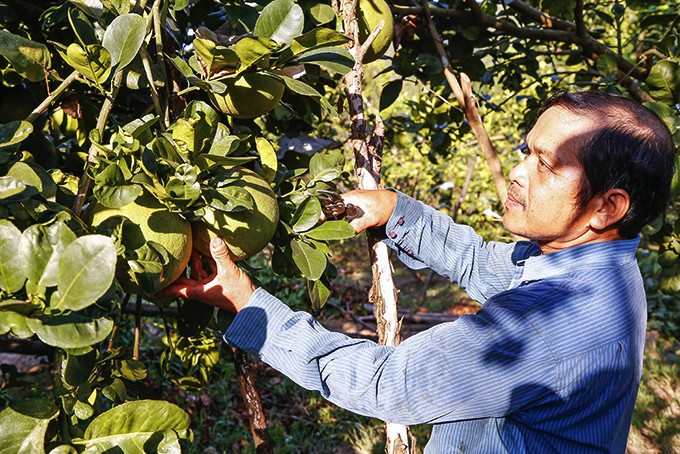
Increasing the area of fruit trees and forming specialized farming areas is one of the goals set by the agricultural sector from now to 2030. To achieve this goal, a series of radical solutions have been put forward.
The area of fruit trees has increased rapidly
Increasing the area of fruit trees and forming specialized farming areas are among the goals set by the agriculture of Khanh Hoa Province from now to 2030. To achieve this goal, a series of radical solutions have been put forward.
According to Tran Thien Hung, Director of the Provincial Sub-Department of Cultivation and Plant Protection, over the years, the area of fruit trees in the province has increased rapidly and reached more than 18,000 hectares so far. The area planted with fruit trees has increased because people have converted the inefficient annual tree planting area to more economically efficient crops such as mango, durian, green-skinned pomelo, etc. The province has formed concentrated and intensive production areas such as mango in Cam Lam district, durian in Khanh Son district and green skin grapefruits in Khanh Vinh district. Some areas have produced according to VietGAP standards. Up to now, the area of fruit trees recognized to meet VietGAP standards is nearly 130ha.
Currently, the long-term industrial crop in the province is mainly cashew with more than 4,000 hectares, which will be restructured in the direction of maintaining cashew areas with a yield of more than 1.5 tons/ha and in arid areas and converting to fruit trees in some areas. Short-term industrial crop is mainly the sugarcane area with about 10,000 ha, forming a concentrated and intensive sugarcane area in Ninh Hoa town. Tran Thien Hung said that from 2017 to 2021, farmers in the province have converted more than 5,000 hectares of crops, 40% of which are given support by the State.

|
According to Le Ba Ninh - Deputy Director of the Department of Agriculture and Rural Development, the field of cultivation has gradually aimed to the crops that bring high incomes to farmers.
The Agriculture and Rural Development of the province has set a target that by 2030, the province will form high-tech agricultural areas associated with linkages in agricultural production in the chain from supply of inputs, services for production and processing; building irrigation systems. At the same time, the agriculture promotes the area of crops that are granted planting area code to meet the standards and conditions for export to the markets of Australia, the US, Europe and China.
For annual crops, the agricultural sector focuses on maintaining and using 20,000 hectares of rice land flexibly and effectively and developing high-quality seed production areas in Dien Khanh district and Ninh Hoa town. High-grade vegetable, including mushrooms, will be focused on developing with 4,500 hectares in area. Along with that, a safe vegetable sales system will be formed to actively supply to urban areas, tourist areas, supermarkets, restaurants…
In addition, the agriculture of the province focuses on developing a number of fruit trees that are local specialties and developing their brands. For example, mango planting area will rise from 8,000 ha now to 10,000 ha in 2030. The province encourages and supports investment in preliminary mango processing and selling establishments; expanding VietGAP mango area; develop a specialized area for mango cultivation with high technology application for export in Cam Lam, reaching about 7,500 ha by 2030.
Durian trees are oriented to increase the area from the current 2,000 ha to 3,000 ha by 2030 in Khanh Son and some places in Khanh Vinh. In which, the area specialized in durian cultivation applying high technology for export in Khanh Son is expected reach about 2,500 hectares by 2030. Similarly, the area of green-skin grapefruit trees is also expected to increase from the current 1,500 hectares to 2,000 hectares by 2030.
Hong Dang
Translated by T.T






